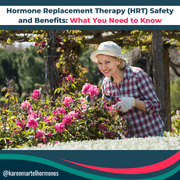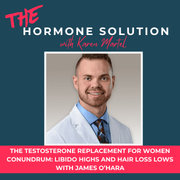Regardless of how common it is, there are probably very few things that can cause a woman to feel less feminine, sexy, and young than having to wear a pad to protect against “a leak”. So, what is urinary incontinence how is it connected to menopause and what can help us hold on to our pee?
Urinary incontinence is involuntary loss of control of one’s bladder. Women experience many changes that have an impact on the pelvic floor – the muscles, ligaments and tissues that support the bladder and uterus. The pelvic floor can become weakened due to pregnancy, childbirth, weight gain and hormone fluctuations. Estrogen helps keep bladder and urethra healthy and strong.
When estrogen levels drop as we inch closer toward menopause, vaginal and bladder tissue becomes thinner and less elastic. The bladder will not stretch like it used as it starts to fill. Our muscles also start to get weaker, including the muscles supporting the pelvic floor making it more difficult to hold on to urine. Low testosterone in menopause has also been shown to increase the likelihood of urinary incontinence.
In astudy of 2123 women who participated in the 2012 cycle of the National Health and Nutrition Examination Survey and underwent measurements of serum total testosterone. It was found that women in the lower quarter percentile of testosterone had 48% increased risk of stress incontinence and 65% increased odds of mixed incontinence compared with women not in the lowest quartile. Testosterone may prevent pelvic floor atrophy, thereby reducing the risk of urinary incontinence.
Carrying excess weight in menopause adds further strain to bladder muscles. All of these factors create the “perfect storm” creating incontinence in mid-life women. There are different types of urinary incontinence.Stress incontinence , most common, is when a small amount of urine may flow involuntarily when you cough, laugh, or sneeze. It can also happen after the “one too many” jumping jacks when working out.
Urge incontinence or “overactive bladder” is when you have an overwhelming urge to go the restroom. It may happen very suddenly, unexpectedly, and you can’t get there fast enough. You may even “dribble” on the way.
Nocturia is when you feel the urge to get up during the night to urinate although you might have trouble letting go once you get to the toilet. When you are finished, or when you think you are, there may be a trail behind you because your bladder has not sufficiently emptied. A urinary tract infection will cause pain along with urgency and frequency as well as dry, irritated skin around the urethra and even bloody pee. When this occurs, seek medical care immediately.
Menopause can be the blame for many problems as we age, however, there are other factors to consider. Drinking caffeinated beverages and alcohol cause you to urinate often. Chronic constipation and medications like diuretics and steroids can also cause incontinence. Food allergies and even genetics can be a factor in incontinence.
There are natural ways to reduce and perhaps even heal incontinence. First things first, your diet. Making changes to eating habits can have a big impact. This is not to body shame anyone. Cutting out caffeine, carbonated beverages alcohol can aid weight loss and make trips to the restroom less frequent. Eliminating spicy foods can also help.
Step two is to stay hydrated which guards against urinary tract infections and prevent urine from becoming too concentrated and acidic. Some even recommend a more alkaline diet.
Step three, schedule a bathroom visit, whether or not you have to go, can ease the urge to urinate and decrease the chance of a leak. Start out by going to the bathroom every two hours, see how that feels and adjust the time from there.
Step four are Kegel exercises strengthen the muscles of the pelvic floor that have become thinner and weaker due to aging and give you more control over leaks which can improve incontinence and as a side benefit, arousal and orgasm! Kegel exercises can also prevent pelvic organ prolapse, which is when the uterus or bladder bulge into the vagina because weakened muscles are unable to hold those organs in place.
Step number five is replace your missing hormones as you age.Bioidentical DHEA , testosterone andestrogen can all treat vaginal dryness, and improves musculature of the deep layers of the vagina. Reduced levels of estrogen starting around menopause can causethinning of the lining of the urethra, the short tube that passes urine from the bladder out of the body.
Vulvovaginal dryness, soreness, burning, irritation, itching and chafing are likely to respond to local estrogen therapy, which can also help greatly with discomfort or pain during sex, correct the vaginal pH and prevent overgrowth of abnormal vaginal flora.
Local low dose treatment with estrogen delivered directly to the vulva and vagina has been found to have a significant therapeutic effect on postmenopausal urogenital symptoms
Estrogen delivered locally can be in the form of:
- Vaginal tablets, gel or a pessary all initially used daily, then twice weekly
- Creams: used daily initially, then twice weekly
- A vaginal silicone ring: changed every 3 months
Testosterone may enhance continence by providing stronger pelvic floor muscles, or it's effect on collagen turnover.
All 3 can also boost your mood and sex drive. If the issue persists, have an open conversation with your doctor. With the proper changes and the right treatment, urinary incontinence doesn’t have to get in the way of having a good time, enjoying intimacy, and living life to the full.














